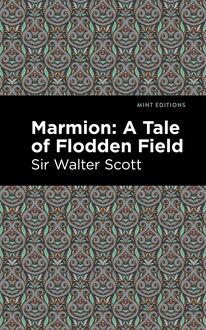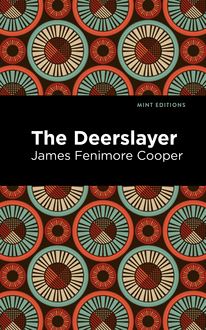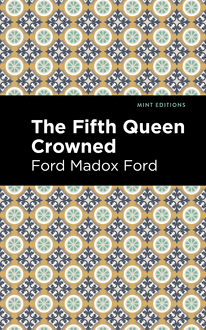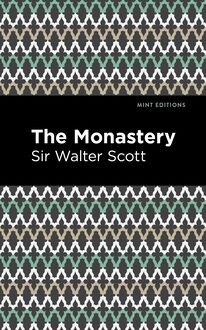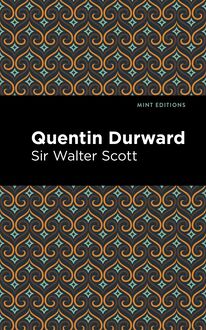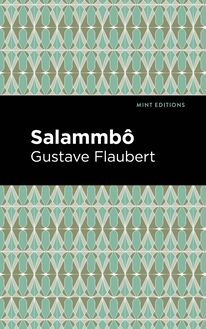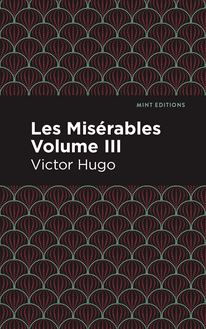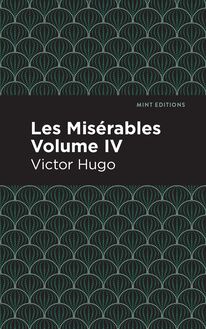-
 Univers
Univers
-
 Ebooks
Ebooks
-
 Livres audio
Livres audio
-
 Presse
Presse
-
 Podcasts
Podcasts
-
 BD
BD
-
 Documents
Documents
-
- Cours
- Révisions
- Ressources pédagogiques
- Sciences de l’éducation
- Manuels scolaires
- Langues
- Travaux de classe
- Annales de BEP
- Etudes supérieures
- Maternelle et primaire
- Fiches de lecture
- Orientation scolaire
- Méthodologie
- Corrigés de devoir
- Annales d’examens et concours
- Annales du bac
- Annales du brevet
- Rapports de stage
La lecture à portée de main
Vous pourrez modifier la taille du texte de cet ouvrage
Découvre YouScribe en t'inscrivant gratuitement
Je m'inscrisDécouvre YouScribe en t'inscrivant gratuitement
Je m'inscrisEn savoir plus
Vous pourrez modifier la taille du texte de cet ouvrage
En savoir plus

Description
Set in Southern Scotland among a time of religious turmoil in the 17th century, Old Morality depicts a young soldier, Henry Morton, as he becomes involved with the armed struggle between two religious groups—the Covenanters and the Cavaliers. While the Cavaliers supported the church of England, Covenanters wished for Scotland to convert to pure Presbyterianism. With neither group accepting their differences, social tensions ran high in Scotland. This all comes to head at a competitive event hosted by Lady Margaret Bellenden, who is a loyal Covenanter. Described as a wapenshaw, a group of soldiers from varying backgrounds assembled to compete against each other. When Henry, the son of a Covenanter, defeats a Cavalier favorite, trouble follows. Though Henry is soon introduced to Lady Margaret Bellenden and her lovely daughter, Edith, his victory is short-lived as the competition arouses unhealthy and aggressive feelings among the opposing groups. After Henry stands up for a man being bullied by the Cavaliers, the two become friends. However, when Henry discovers a secret about his new friend, he is forced to become an outlaw, fleeing from the vindictive Cavalier patrols. Centered around true events of an uprising in 1679, Old Morality is praised as one of Sir Walter Scott’s best novels. Written in with a whimsical fashion, fascinating Scottish dialect, and flowing prose, critics appreciated the characters and descriptions featured in Old Morality, along with its delightful elements of romance, action, and adventure. Though published over two-hundred years ago, Old Morality depicts a serious struggle between religions, portraying themes and ideology that remains to be relevant to modern society, while simultaneously offering invaluable insight on the intriguing social and religious history of Scotland. This edition of Old Morality by Sir Walter Scott now features a striking new cover design and is printed in a font that is both modern and readable. With these accommodations, this edition of Old Morality crafts an accessible and pleasant reading experience for modern audiences while restoring the original mastery and drama of Sir Walter Scott’s literature.
Sujets
Informations
| Publié par | Mint Editions |
| Date de parution | 14 mai 2021 |
| Nombre de lectures | 0 |
| EAN13 | 9781513285412 |
| Langue | English |
| Poids de l'ouvrage | 2 Mo |
Informations légales : prix de location à la page 0,0500€. Cette information est donnée uniquement à titre indicatif conformément à la législation en vigueur.
Extrait
Old Mortality
Sir Walter Scott
Old Mortality was first published in 1816.
This edition published by Mint Editions 2021.
ISBN 9781513280394 | E-ISBN 9781513285412
Published by Mint Editions®
minteditionbooks.com
Publishing Director: Jennifer Newens
Design & Production: Rachel Lopez Metzger
Project Manager: Micaela Clark
Typesetting: Westchester Publishing Services
C ONTENTS V OLUME I I II III IV V VI VII VIII IX X XI XII XIII XIV XV XVI XVII XVIII XIX XX XXI V OLUME II I II III IV V VI VII VIII IX X XI XII XIII XIV XV XVI XVII XVIII XIX XX XXI XXII XXIII C ONCLUSION N OTES
VOLUME I
I
P RELIMINARY
Why seeks he with unwearied toil
Through death’s dim walks to urge his way,
Reclaim his long-asserted spoil,
And lead oblivion into day?
—Langhorne
“ M ost readers,” says the Manuscript of Mr. Pattieson, “must have witnessed with delight the joyous burst which attends the dismissing of a village-school on a fine summer evening. The buoyant spirit of childhood, repressed with so much difficulty during the tedious hours of discipline, may then be seen to explode, as it were, in shout, and song, and frolic, as the little urchins join in groups on their play-ground, and arrange their matches of sport for the evening. But there is one individual who partakes of the relief afforded by the moment of dismission, whose feelings are not so obvious to the eye of the spectator, or so apt to receive his sympathy. I mean the teacher himself, who, stunned with the hum, and suffocated with the closeness of his school-room, has spent the whole day (himself against a host) in controlling petulance, exciting indifference to action, striving to enlighten stupidity, and labouring to soften obstinacy; and whose very powers of intellect have been confounded by hearing the same dull lesson repeated a hundred times by rote, and only varied by the various blunders of the reciters. Even the flowers of classic genius, with which his solitary fancy is most gratified, have been rendered degraded, in his imagination, by their connexion with tears, with errors, and with punishment; so that the Eclogues of Virgil and Odes of Horace are each inseparably allied in association with the sullen figure and monotonous recitation of some blubbering school-boy. If to these mental distresses are added a delicate frame of body, and a mind ambitious of some higher distinction than that of being the tyrant of childhood, the reader may have some slight conception of the relief which a solitary walk, in the cool of a fine summer evening, affords to the head which has ached, and the nerves which have been shattered, for so many hours, in plying the irksome task of public instruction.
“To me these evening strolls have been the happiest hours of an unhappy life; and if any gentle reader shall hereafter find pleasure in perusing these lucubrations, I am not unwilling he should know, that the plan of them has been usually traced in those moments, when relief from toil and clamour, combined with the quiet scenery around me, has disposed my mind to the task of composition.
“My chief haunt, in these hours of golden leisure, is the banks of the small stream, which, winding through a ‘lone vale of green bracken,’ passes in front of the village school-house of Gandercleugh. For the first quarter of a mile, perhaps, I may be disturbed from my meditations, in order to return the scrape, or doffed bonnet, of such stragglers among my pupils as fish for trouts or minnows in the little brook, or seek rushes and wild-flowers by its margin. But, beyond the space I have mentioned, the juvenile anglers do not, after sunset, voluntarily extend their excursions. The cause is, that farther up the narrow valley, and in a recess which seems scooped out of the side of the steep heathy bank, there is a deserted burial-ground, which the little cowards are fearful of approaching in the twilight. To me, however, the place has an inexpressible charm. It has been long the favourite termination of my walks, and, if my kind patron forgets not his promise, will (and probably at no very distant day) be my final resting-place after my mortal pilgrimage. 1
“It is a spot which possesses all the solemnity of feeling attached to a burial-ground, without exciting those of a more unpleasing description. Having been very little used for many years, the few hillocks which rise above the level plain are covered with the same short velvet turf. The monuments, of which there are not above seven or eight, are half sunk in the ground, and overgrown with moss. No newly-erected tomb disturbs the sober serenity of our reflections by reminding us of recent calamity, and no rank-springing grass forces upon our imagination the recollection, that it owes its dark luxuriance to the foul and festering remnants of mortality which ferment beneath. The daisy which sprinkles the sod, and the harebell which hangs over it, derive their pure nourishment from the dew of heaven, and their growth impresses us with no degrading or disgusting recollections. Death has indeed been here, and its traces are before us; but they are softened and deprived of their horror by our distance from the period when they have been first impressed. Those who sleep beneath are only connected with us by the reflection, that they have once been what we now are, and that, as their relics are now identified with their mother earth, ours shall, at some future period, undergo the same transformation.
“Yet, although the moss has been collected on the most modern of these humble tombs during four generations of mankind, the memory of some of those who sleep beneath them is still held in reverent remembrance. It is true, that, upon the largest, and, to an antiquary, the most interesting monument of the group, which bears the effigies of a doughty knight in his hood of mail, with his shield hanging on his breast, the armorial bearings are defaced by time, and a few worn-out letters may be read at the pleasure of the decipherer, Dns. Johan—de Hamel,—or Johan—de Lamel—And it is also true, that of another tomb, richly sculptured with an ornamental cross, mitre, and pastoral staff, tradition can only aver, that a certain nameless bishop lies interred there. But upon other two stones which lie beside, may still be read in rude prose, and ruder rhyme, the history of those who sleep beneath them. They belong, we are assured by the epitaph, to the class of persecuted Presbyterians who afforded a melancholy subject for history in the times of Charles II and his successor. 2 In returning from the battle of Pentland Hills, a party of the insurgents had been attacked in this glen by a small detachment of the King’s troops, and three or four either killed in the skirmish, or shot after being made prisoners, as rebels taken with arms in their hands. The peasantry continued to attach to the tombs of those victims of prelacy an honour which they do not render to more splendid mausoleums; and, when they point them out to their sons, and narrate the fate of the sufferers, usually conclude, by exhorting them to be ready, should times call for it, to resist to the death in the cause of civil and religious liberty, like their brave forefathers.
“Although I am far from venerating the peculiar tenets asserted by those who call themselves the followers of those men, and whose intolerance and narrow-minded bigotry are at least as conspicuous as their devotional zeal, yet it is without depreciating the memory of those sufferers, many of whom united the independent sentiments of a Hampden with the suffering zeal of a Hooper or Latimer. On the other hand, it would be unjust to forget, that many even of those who had been most active in crushing what they conceived the rebellious and seditious spirit of those unhappy wanderers, displayed themselves, when called upon to suffer for their political and religious opinions, the same daring and devoted zeal, tinctured, in their case, with chivalrous loyalty, as in the former with republican enthusiasm. It has often been remarked of the Scottish character, that the stubbornness with which it is moulded shows most to advantage in adversity, when it seems akin to the native sycamore of their hills, which scorns to be biassed in its mode of growth even by the influence of the prevailing wind, but, shooting its branches with equal boldness in every direction, shows no weather-side to the storm, and may be broken, but can never be bended. It must be understood that I speak of my countrymen as they fall under my own observation. When in foreign countries, I have been informed that they are more docile. But it is time to return from this digression.
“One summer evening, as in a stroll, such as I have described, I approached this deserted mansion of the dead, I was somewhat surprised to hear sounds distinct from those which usually soothe its solitude, the gentle chiding, namely, of the brook, and the sighing of the wind in the boughs of three gigantic ash-trees, which mark the cemetery. The clink of a hammer was, on this occasion, distinctly heard; and I entertained some alarm that a march-dike, long meditated by the two proprietors whose estates were divided by my favourite brook, was about to be drawn up the glen, in order to substitute its rectilinear deformity for the graceful winding of the natural boundary. 3 As I approached, I was agreeably undeceived. An old man was seated upon the monument of the slaughtered presbyterians, and busily employed in deepening, with his chisel, the letters of the inscription, which, announcing, in scriptural language, the promised blessings of futurity to be the lot of the slain, anathematized the murderers with corresponding violence. A blue bonnet of unusual dimensions covered the grey hairs of the pious workman. His dress was a large old-fashioned coat of the coarse cloth called hoddingrey, usually worn by the elder peasants, with waistcoat and breeches of the same
-
 Univers
Univers
-
 Ebooks
Ebooks
-
 Livres audio
Livres audio
-
 Presse
Presse
-
 Podcasts
Podcasts
-
 BD
BD
-
 Documents
Documents
-
Jeunesse
-
Littérature
-
Ressources professionnelles
-
Santé et bien-être
-
Savoirs
-
Education
-
Loisirs et hobbies
-
Art, musique et cinéma
-
Actualité et débat de société
-
Jeunesse
-
Littérature
-
Ressources professionnelles
-
Santé et bien-être
-
Savoirs
-
Education
-
Loisirs et hobbies
-
Art, musique et cinéma
-
Actualité et débat de société
-
Actualités
-
Lifestyle
-
Presse jeunesse
-
Presse professionnelle
-
Pratique
-
Presse sportive
-
Presse internationale
-
Culture & Médias
-
Action et Aventures
-
Science-fiction et Fantasy
-
Société
-
Jeunesse
-
Littérature
-
Ressources professionnelles
-
Santé et bien-être
-
Savoirs
-
Education
-
Loisirs et hobbies
-
Art, musique et cinéma
-
Actualité et débat de société
- Cours
- Révisions
- Ressources pédagogiques
- Sciences de l’éducation
- Manuels scolaires
- Langues
- Travaux de classe
- Annales de BEP
- Etudes supérieures
- Maternelle et primaire
- Fiches de lecture
- Orientation scolaire
- Méthodologie
- Corrigés de devoir
- Annales d’examens et concours
- Annales du bac
- Annales du brevet
- Rapports de stage



